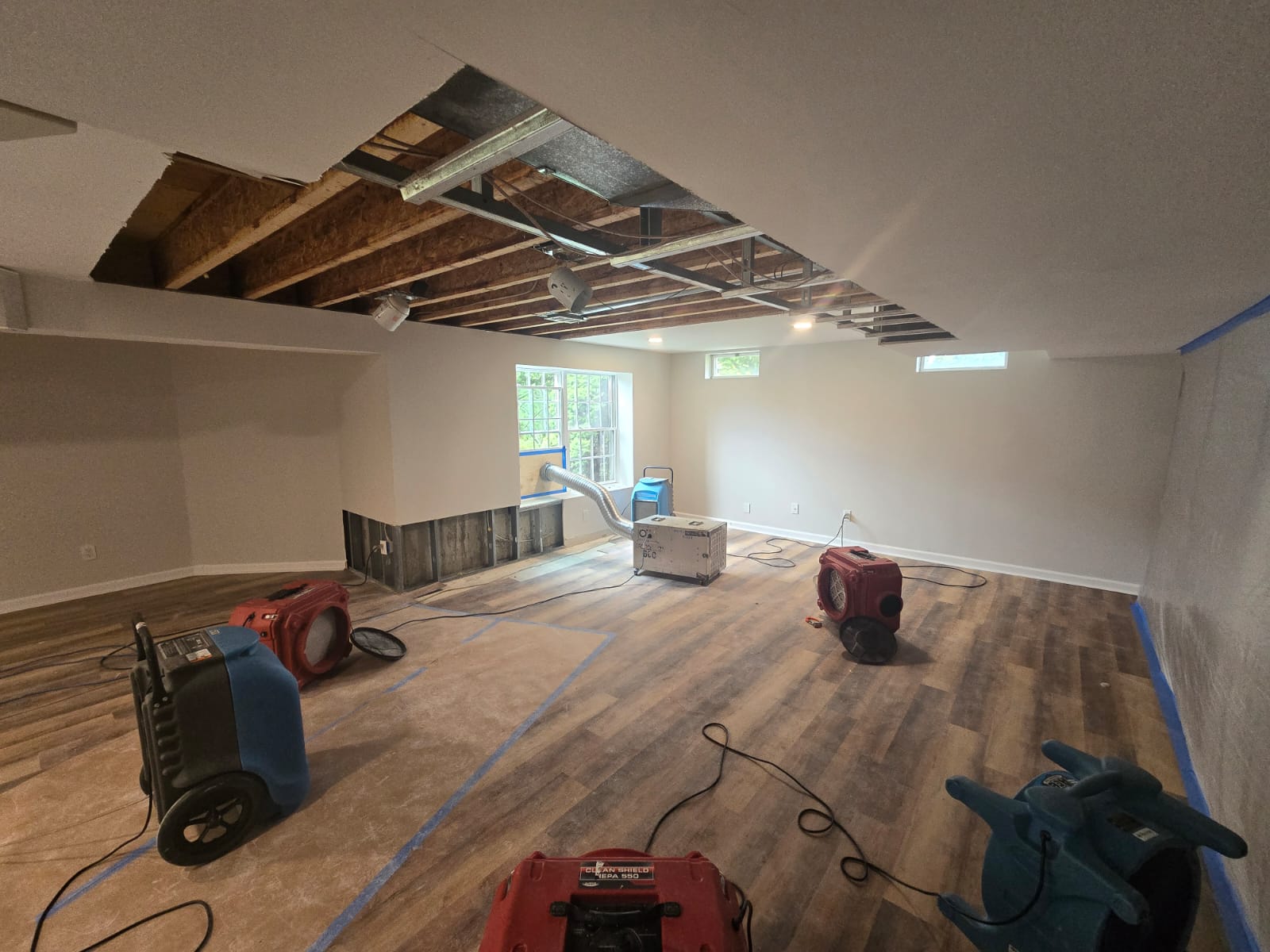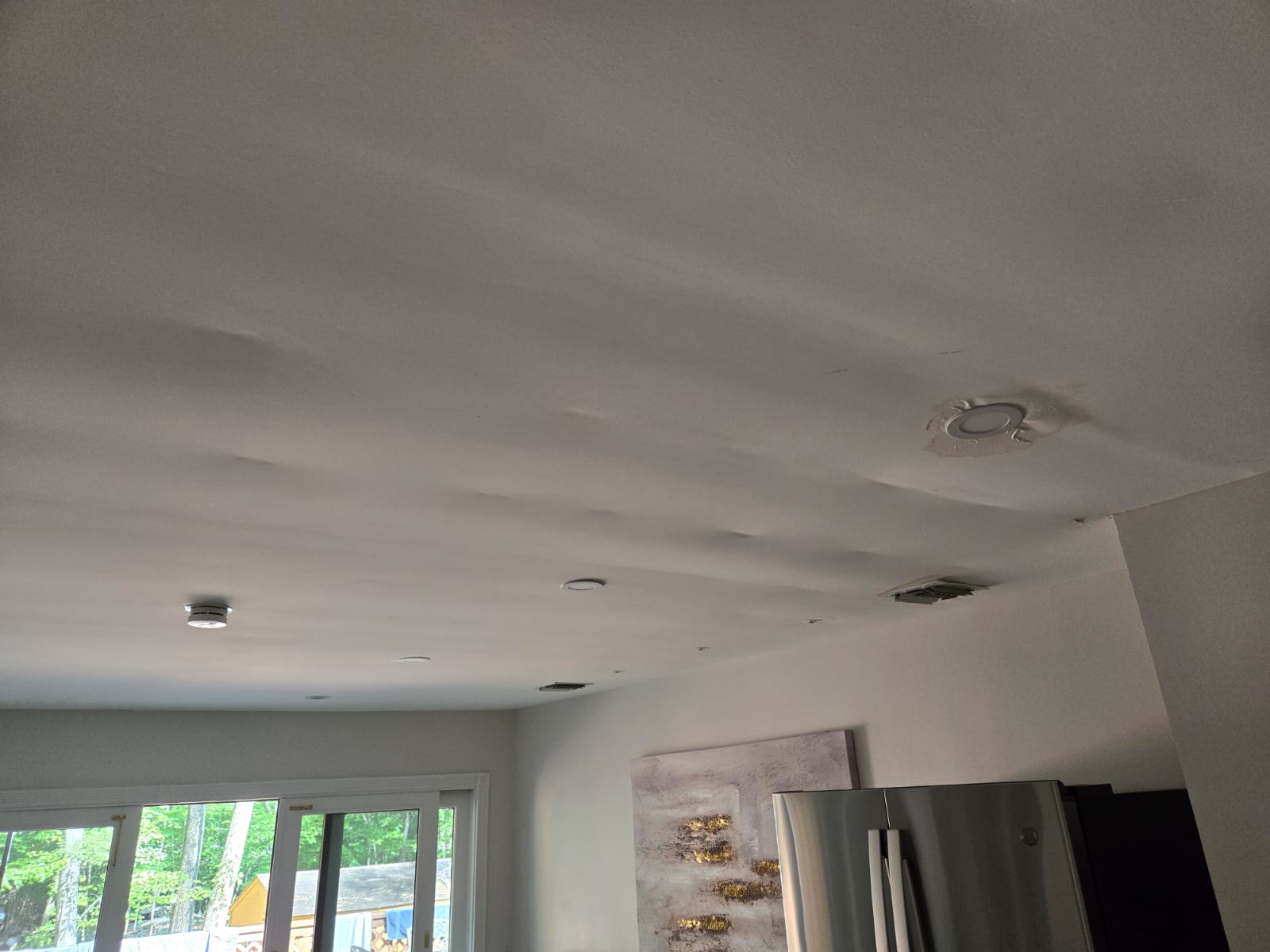OUR CEILING LEAK DAMAGE RESTORATION PROCESS
Emergency Response
Initial Assessment and Leak Detection
The restoration team conducts a thorough inspection to identify the source of the ceiling leak. This could be from plumbing, roof damage, or other sources. The team assesses the extent of the water damage to both the ceiling and any surrounding areas, determining the next steps based on the severity of the leak.
Stopping the Source of the Leak
The first priority is stopping the source of the leak. If the cause is a plumbing issue, the water supply may need to be shut off until repairs are made. If the leak is due to roof damage, the team will provide temporary fixes, such as applying a tarp to the roof, until a permanent repair can be made.
Water Extraction and Containment
Standing water or pooled moisture is extracted from the affected areas using pumps, vacuums, or specialized tools. Containment strategies, like using plastic sheets or buckets, may be employed to prevent further water from spreading to other parts of the home.
Drying and Dehumidification
Industrial fans, air movers, and dehumidifiers are set up to dry out the ceiling, walls, and surrounding areas. The team also uses moisture meters and infrared cameras to detect any hidden moisture behind the walls or ceiling. Ensuring complete drying is crucial to prevent mold growth and further structural damage.
Removal of Damaged Materials
Any materials that are beyond repair, such as wet insulation, damaged drywall, or compromised ceiling tiles, are removed. This step prevents mold and ensures that only dry, sound materials remain. In some cases, sections of the ceiling or wall may need to be cut out and replaced.
Mold Prevention and Remediation
Since ceiling leaks can create prime conditions for mold growth, the team applies antimicrobial treatments to prevent mold from developing. If mold is already present, we follow a remediation process to safely remove and treat the affected areas.
Structural Repairs
Once the affected area is dry and free of mold, the team begins repairing the damaged ceiling. This may involve replacing sections of drywall, repainting, and restoring the ceiling to its original condition. Insulation may also need to be replaced if it was compromised by the water.
Leak Source Repair
In parallel with restoring the ceiling, the team addresses the root cause of the leak. This could involve repairing a plumbing pipe, fixing roof damage, or addressing poor drainage that caused water intrusion. Ensuring the source of the leak is fixed is key to preventing future incidents.
Cleaning and Sanitization
The entire area, including any surrounding rooms impacted by the leak, is thoroughly cleaned and sanitized. This ensures the space is safe for occupancy, free from contaminants, and returned to a pre-damage state.
Final Inspection and Monitoring
The restoration team conducts a final inspection to ensure all moisture has been removed, repairs are complete, and no hidden issues remain. We monitor moisture levels and structural integrity, providing assurance that the ceiling is fully restored and the problem will not recur.
Insurance Documentation and Support
Throughout the process, detailed documentation is provided to support any insurance claims. This includes photos of the damage, an inventory of repairs, and cost estimates to help the homeowner navigate the claims process smoothly.
Signs of Ceiling Leak
Common Causes of Ceiling Leaks
WHAT OUR CUSTOMERS SAY ABOUT US
We Work With Major Insurance Companies Including:




















FREE QUOTE
Do you need help with damage clean up and/or restoration? Fill out this form to get in touch.
OFFICE LINE
1.800.555.6789
EMERGENCY
1.800.555.0000
WORKING HOURS







